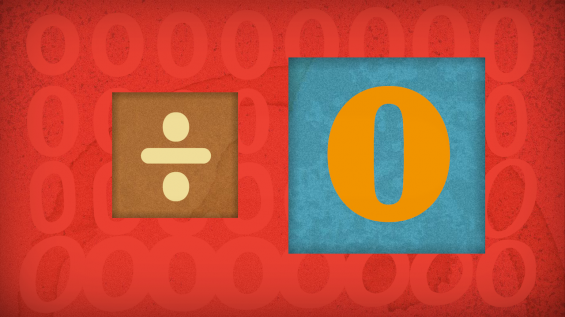
Meet the second cohort of TED-Ed Innovative Educators!
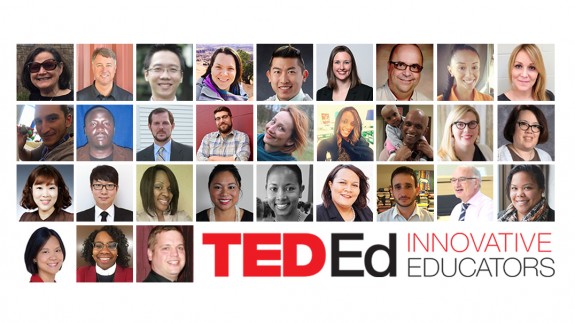
Kenya. India. Australia. These are just three of the 12 countries represented by the second cohort of 30 TED-Ed Innovative Educators. [Learn more about the TED-Ed Innovative Educator program here.] As leaders within TED’s global network of over 250,000 teachers, these innovative educators are dedicated to making the world better for learners everywhere by helping people make the most of TED’s free tools for teachers and students — including TED-Ed Lessons, TED-Ed Clubs and the TED-Ed Platform. Throughout the year-long program, this outstanding community will connect regularly across time zones and national borders to explore, create and share idea-based innovations that spark student curiosity. Below, meet the second cohort of TED-Ed Innovative Educators as they embark on this learning voyage.
What does innovation in education look like to you?
We asked the second cohort of TED-Ed Innovative Educators. Read their inspiring answers below:
Sarah Harkin, Darwin, AUSTRALIA
“Innovation in education means thinking about the hard questions while looking at the larger picture. What isn’t working? Who is being left out? What could be better? Designing solutions to address areas of real need in the classroom can be tricky, as different groups of people must work together to implement new initiatives. However, bettering a student’s future is more than a worthy cause.”
David Aderhold, New Jersey, USA
“Innovation in education means the evolution of thinking over time. It means applying one’s learning to problems in order to create varied and nuanced solutions.”
Mark Ayres, Lancashire, UK
“Innovation in education means changing mindsets. It means using real life situations — and positive role models in the media — to teach difficult concepts.”
John Branya, Nairobi, KENYA
“Innovation in education means helping the students to learn actively and at their own pace, with frequent feedback and encouragement.”
David Burt, California, USA
“Innovation comes from a constant desire to improve the way you teach. Teachers must be willing to evaluate the needs of their students and the effectiveness of their teaching methods. Once a need is identified, educators need to be willing to change lessons, to use different methods — and to adapt new technologies to the needs of their students.”
Wiputra Cendana, West Java, INDONESIA
“Innovation in education means that a new, fresh idea bursts from the mind to bring benefit to the education community. It means integrating visual or auditory media in the classroom so that students can better absorb the content of learning and be more equipped as 21st century learners. It means shifting our paradigm from traditional learning methods to new learning methods that implement more innovation in education. It means that the curriculum itself is very dynamic, like a living organism.”
Sandy Chambers, North Carolina, USA
“Innovation is required! Innovation is creating, collaborating and thinking critically. Innovation in education will prepare our students for the future world.”
Pen-Pen Chen, New York, USA
“To me, innovation in education means not being confounded by limitations, financial or otherwise. It means to create new and effective methods for having students learn. I am a firm believer in Coach John Wooden’s quote, ‘You haven’t taught until they have learned.’ I am also a proponent of Bruce Lee’s approach to martial arts, which is to not subscribe to one particular school of thought, but rather to take learnings and effective methods from wherever you may find them, and incorporate them to achieve the desired results.”
Sunkyong Choi, Daegu, SOUTH KOREA
“To me, innovation in education means to go back to the essence of education. Education is raising a person, I think. It is encouraging students to try something new, instead of defining their abilities by scores.”
Natalie Coleman, Illinois, USA
“It means allowing students to try and fail and try again. It means allowing students to be creative thinkers, free to try what they think will work to solve a problem. Innovation is not pre-packaged. Nor is it determined by demographics. We are currently using our 3D printers to allow students to create their own prototype of an innovative product that will help society on a global level. Allowing them to address a problem — one that they believe they have the solution for — creates a sense of accomplishment and importance in their work and contribution to society.”
Rafranz Davis, Texas, USA
“Innovation in education is about kids learning from what motivates them and designing their own pathways with support. It’s not wrapped in a single device or app, but in the access that the devices and apps provide. Too often, the adults decide what students should be, and we don’t include them in their own learning enough. What if we gave students to room to explore, think, create and build? That’s what innovation is about. True innovation is when we create the space that all students can achieve this regardless of zip code, IQ, economic background, race or gender. It is where we no longer use the phrase, “yes…but” and instead scream, “yes…and.”
Jacqueline Fernandez, Maryland, USA
“Innovation in education is to be comfortable questioning what we do in our schools and why we do it. It’s to make positive changes that will impact student learning outcomes. As a STEM educator, it is my duty to make sure that students are engaged in my classes through my curriculum, lessons and use of technology.”
Bojana Golubovic, Nis, SERBIA
“It can be described in few words: being – doing – knowing. I find the “Nosce te ipsum” learning strategy and Socratic dialogue the best approaches in education today. Yes, I can not imagine education of the 21st century without application of IT in the classrooms, but without reflection on the question: “What is education for?” and “Who am I?” education loses its essence.”
Kathryn Hammond, Florida, USA
“To me, innovation in education is finding ways to make what and how students learn engaging, relevant and meaningful. It means embracing technology and change, and helping students to do the same. It means introducing students to a broad range of resources, information, and perspectives, and giving them the tools, the freedom, and the confidence to move beyond what you have to teach them. It means constantly seeking out new tools, methods, resources, and ideas, or using and combining existing ones in new ways, while systematically evaluating everything we do to make sure that whatever we do is in the best interest of students.”
Susan Herder, Minnesota, USA
“Innovation in education means that we are not treating school and students as part of a factory model, but instead finding ways for students to guide us in their own learning. Innovation is letting go of teaching the way we learned, because ‘that worked then.’ It is about embracing new ideas, providing places to learn iteratively, and recognizing that failure is an important part of working and that most people do not work in isolation. It is about providing ways for students to collaborate with others beyond the classroom walls and to think on a global scale.”
Corey Holmer, Illinois, USA
“An idea becomes an innovation when it is put into action, and innovation exists in education when that idea takes action, through a team effort, and then results in student growth. Innovation also means that an idea is growing, impacting others, and promoting positive change. Educational innovation may include new tools, methods, workspaces, or initiatives, but only if they are the result of a collaborative effort to genuinely enhance student learning. I see innovation in schools whenever teachers, students, parents, or administrators find a new, creative way to address a need. Innovation gains momentum when educators team up, combine their expertise, ask questions, and learn from each other as they work to solve problems or make improvements to existing systems. Innovation doesn’t need to be fancy or result in accolades — but in a school setting, it does need to lead to authentic student growth. True innovation thrives when educators infuse their own passion into learning.”
Ashley Huffmon, Abu Dhabi, UAE
“Innovation in education means that a student has control of their own learning. It is creativity at its best without limitations. It is cooperative learning in such a way that each student learns from one another, and the lessons can be connected to day-to-day life.”
Gwangho Kim, Cheonan, SOUTH KOREA
“Innovation in education is necessary for survival in the future. The world is changing rapidly, and students must learn new skills in school to live in the real world.”
Yau-Jau Ku, Buenos Aires, ARGENTINA
“Innovation takes creativity, and creativity takes risks. In order to take risks, it must feel safe, where failure is redefined and seen as a stepping stone in the learner’s journey. Innovation in education is about problem solving, resiliency, and grit. We aren’t providing lesson plans, but creating learning experiences that our students will never forget.”
Alicia Lane, Washington, DC, USA
“Innovation in education means that teaching and learning at all levels is relevant and aligned to ensure that the most critical challenges we face today (engineering better medicines, securing cyberspace, increasing access to clean water and many other needs) will be solved by our current learners when they enter the workforce in the future.”
Jennifer Lehotsky, Illinois, USA
“Innovation in education is about empowering students with the skills to engage in their own learning paths. In the end, it is about teaching them how to use the learning tools available to them, so that they have the grit to solve problems with authentic solutions that were once inconceivable.”
Liz Loether, California, USA
“Innovation means to look at education from different perspectives, and to try something new in an effort to help students become better than they were yesterday. Those that limit innovation see the classroom, the students, and the teaching role as the same day-to-day. Innovation is evolving with the ever-changing world.”
Wendy Morales, New Jersey, USA
“Innovation means taking risks and learning from both successes and failures. Innovation does not always have to include technology, but it has to result in an increase in student motivation and success. An innovative learning environment is one in which teachers and students are learning together, and students are driving instruction. Students have choice and voice in an innovative classroom, and are becoming prepared for a future that will look very different than our present. Innovation requires problem-solving, communication, collaboration and creativity; skills that all of our students will need as we get further into the 21st century.”
Vipul S Redey, Bangalore, INDIA
“Innovation in education means 3 things: Individual attention, immersive learning for things like languages, and a curriculum that honors Constructivism.”
Fred Sagwe, Kisii, KENYA
“Innovation in education will improve what exists, building on existing resources and materials from co-educators, writers and educational technology experts. Innovation acts as a catalyst and a spice to earlier creations.”
Lamar Schrader, Texas, USA
“Innovation in education means sharing ideas on how to activate and cultivate students’ learning. It means helping students make their own lives better and richer, and showing them ways that they can make their world a better place to live in by using their intelligence and talents to serve those around them. Innovation does not mean throwing out good ideas that have worked, just for the sake of the new — but it can mean sacrificing good ideas to get to great ideas.”
Georgios Villias, Athens, GREECE
“Innovation in education means to start using all of our senses and abilities in education, and not only our reading skills. Seeing, hearing, experiencing, doing, talking, cooperating, watching, feeling, creating, constructing, playing, imagining, dreaming — these are some of the verbs that should be used more often in a learning experience, because education should be fun. Innovation means using these verbs in productive and meaningful ways.”
Jennifer Ward, Michigan, USA
“Innovation requires first understanding the root of a problem in order to better grasp where, how, and what kind of change is needed. Innovation involves mistakes, missteps and failures, and it also involves resilience, passion and grit.”
Shameka Williams, Georgia, USA
“Innovation in education means using creative ways to pique student curiosity and interest, while also helping students develop 21st century skills. This can happen through technology, in-field experts, or relating content and approaches to real-world events. I believe that innovation is exciting and that students should feel excited to come into innovative environments.”
Pablo Yafe, Buenos Aires, ARGENTINA
“Innovation in education means reevaluating the needs and potential of students in interaction with the world they will be living in. It means training students in the art of producing new content meant to improve their surroundings. It means redefining the teaching role.”
Want to learn something new every week? Sign up here for the TED-Ed Newsletter.
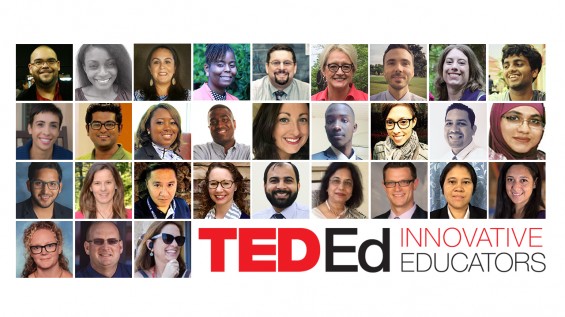
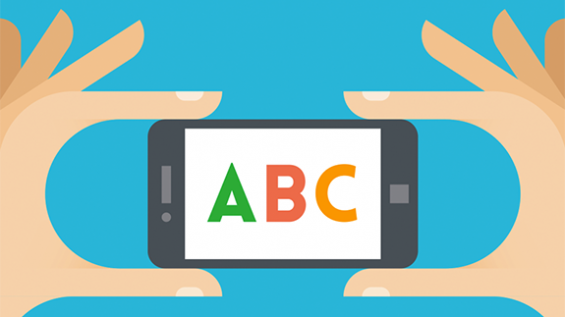
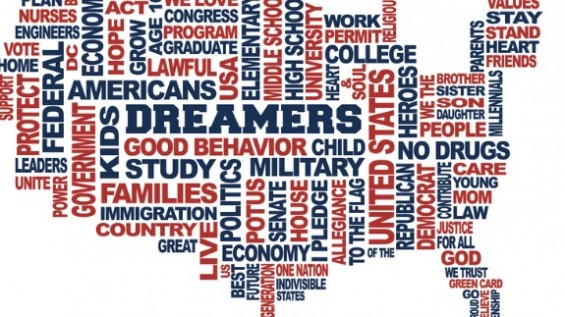

I want to know more.
Innovation in education means being open minded and serving others by giving of yourself.